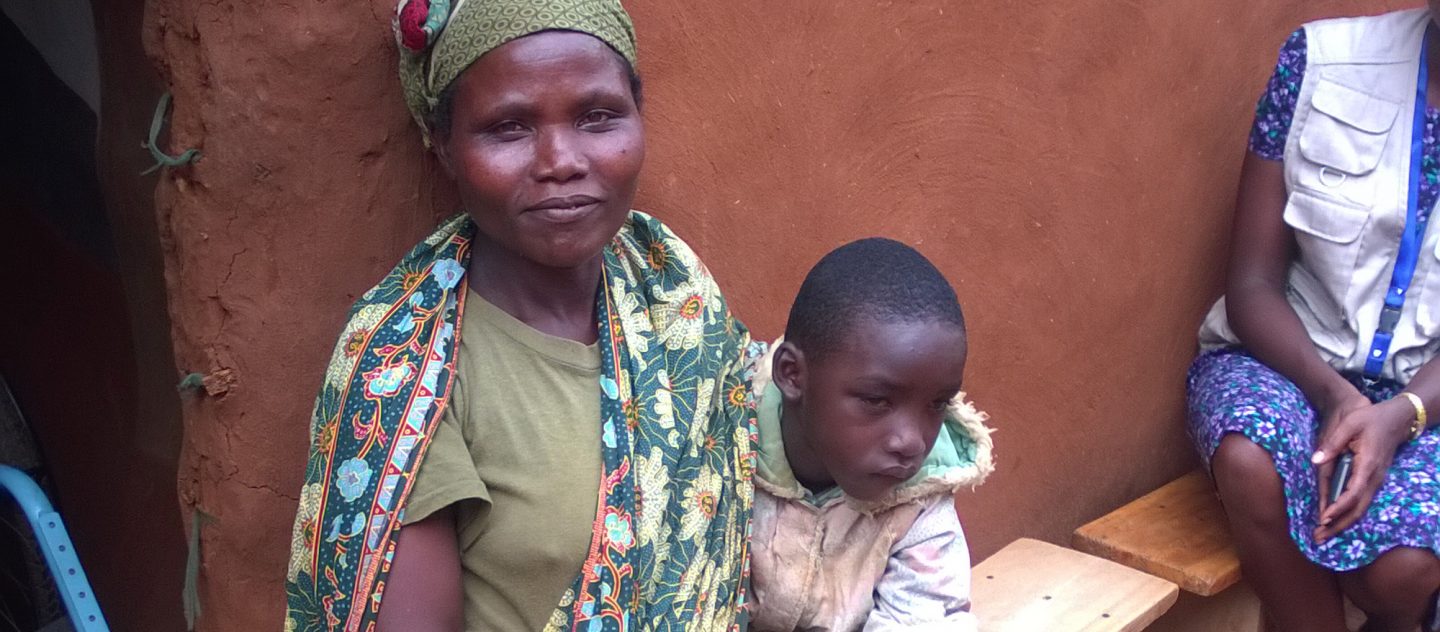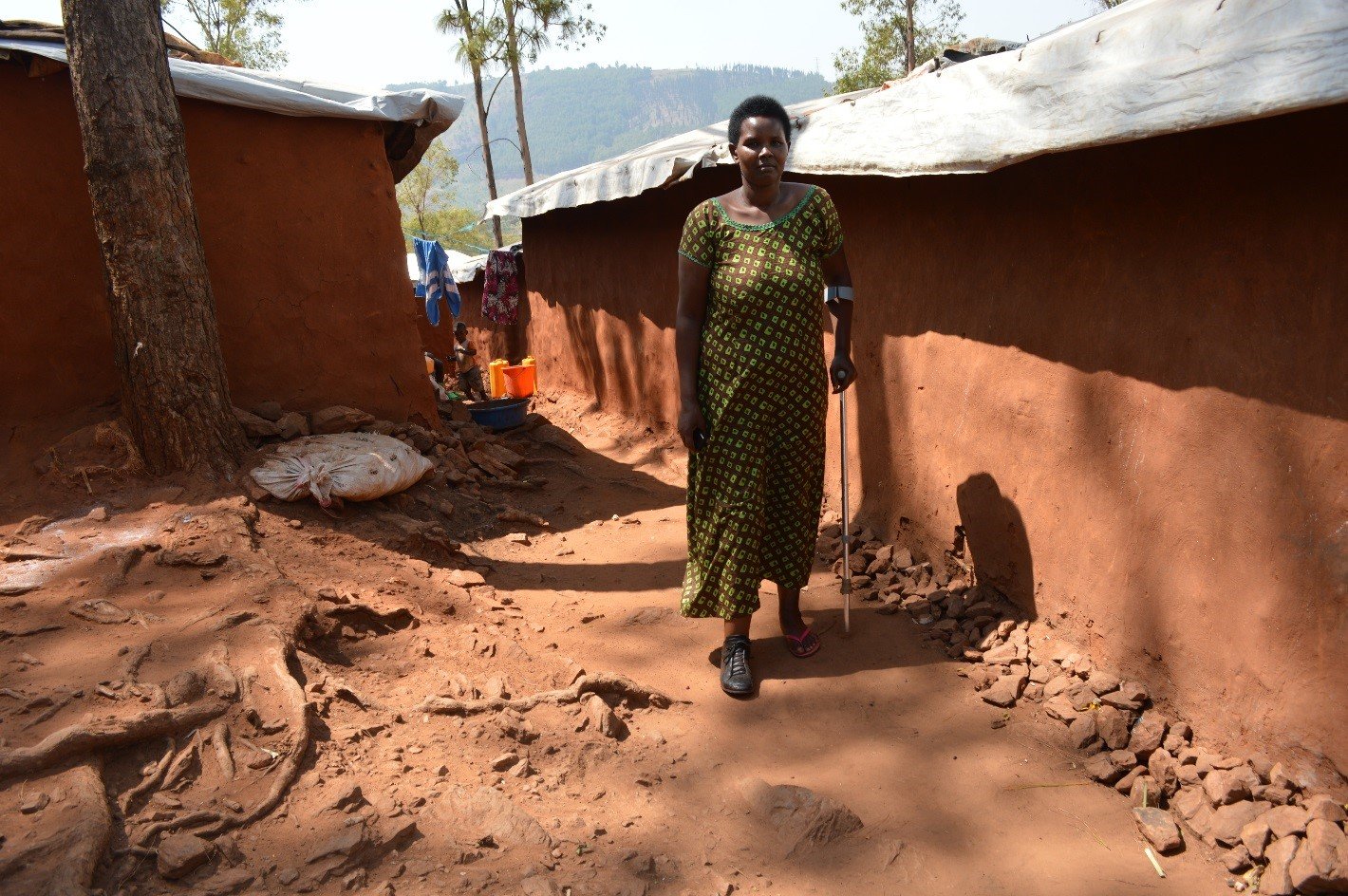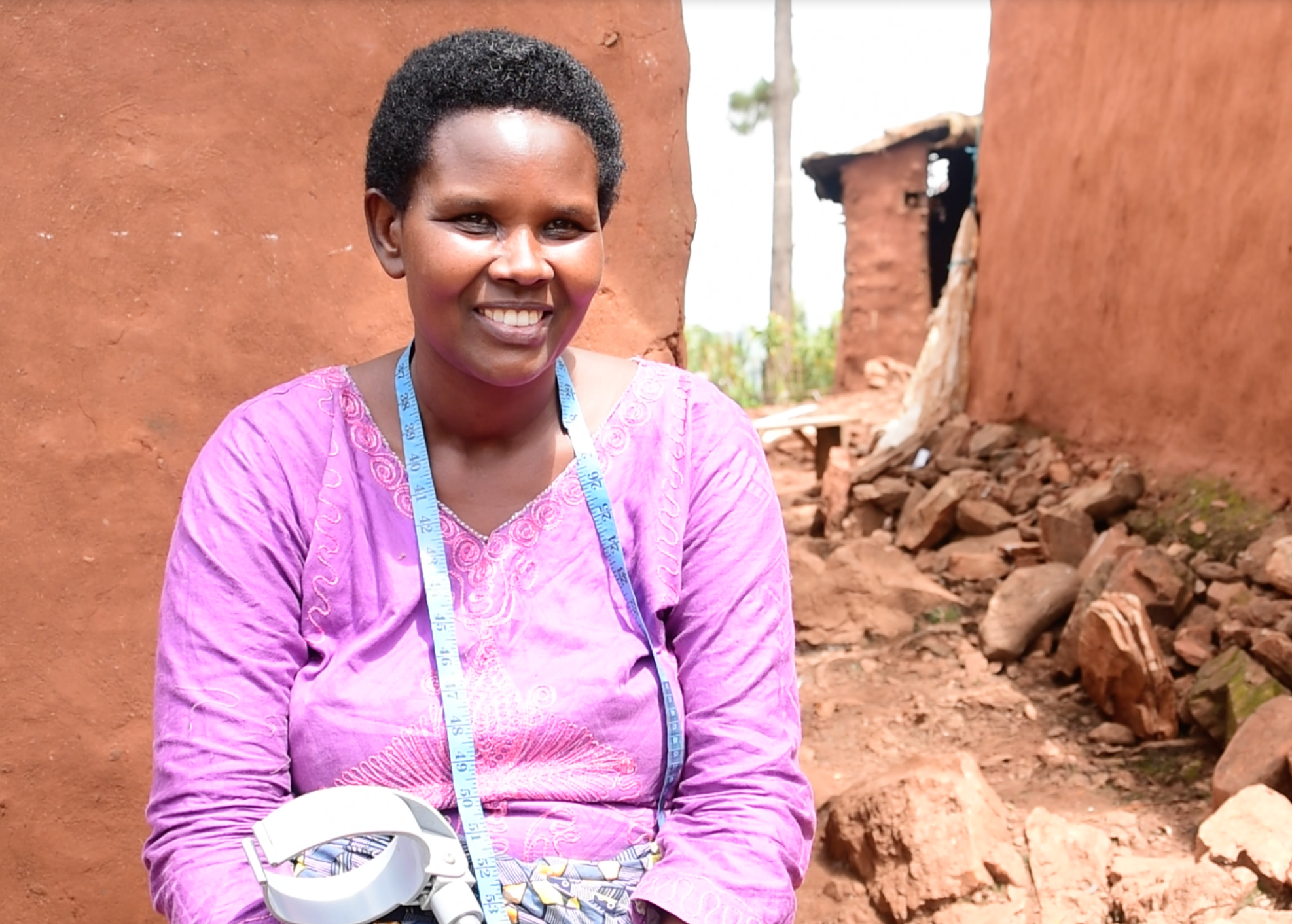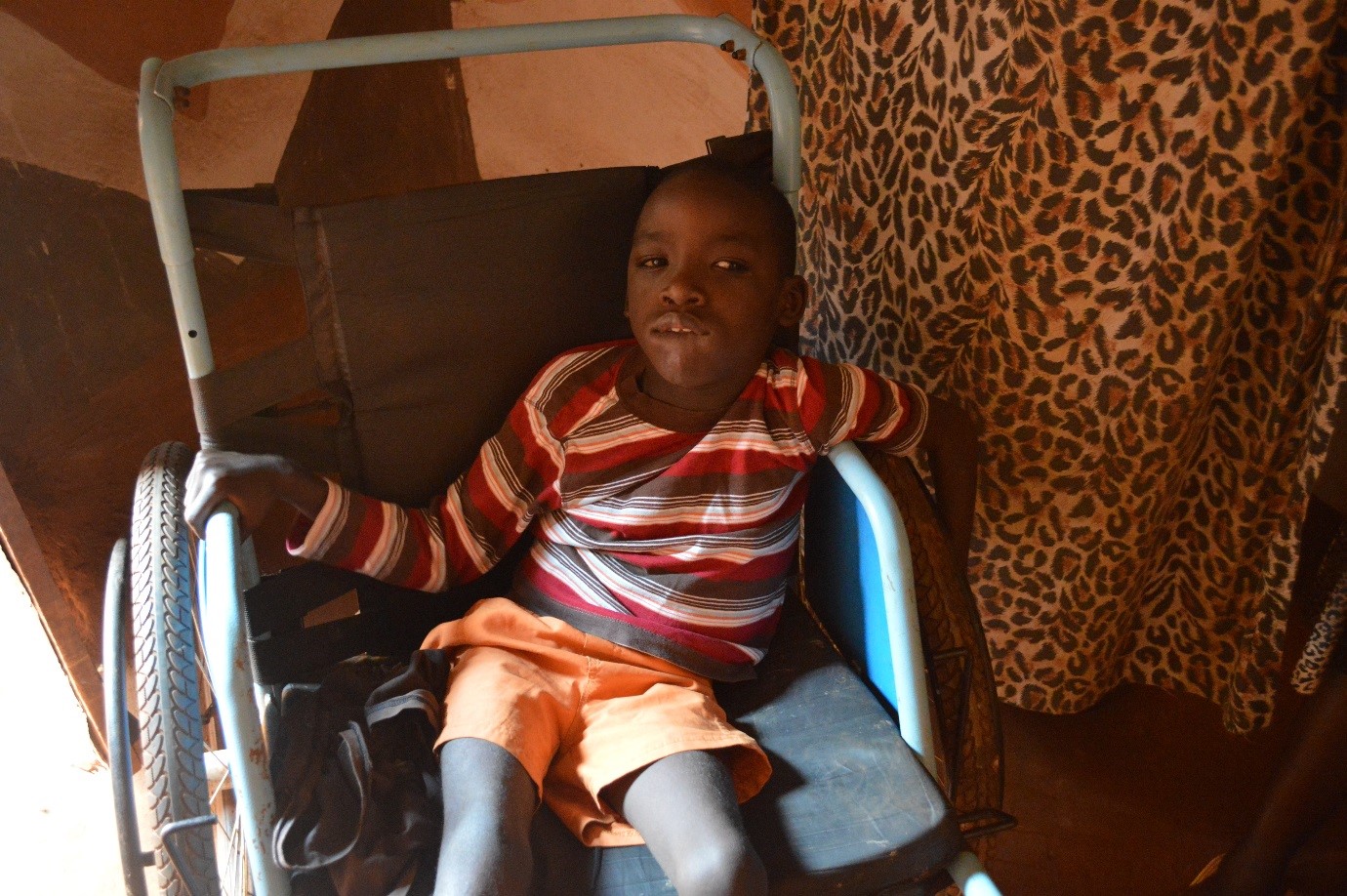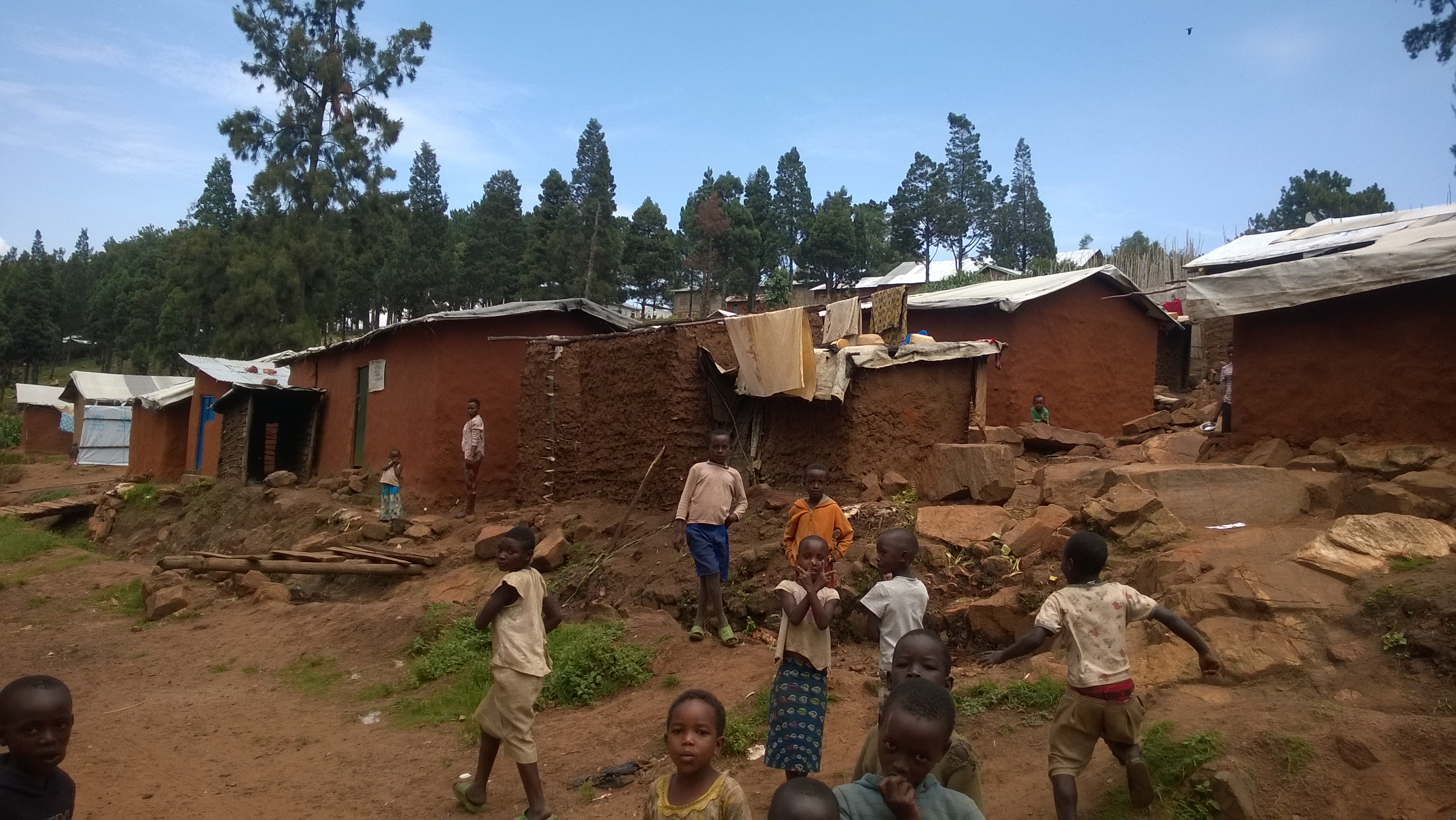The Nyabiheke refugee camp is located a three hours’ drive from Kigali, the capital of Rwanda. The camp is home to 15,000 refugees from the Democratic Republic of Congo. It is beautifully situated on a hilltop with a wide view of the surrounding landscape, displaying the rolling green hills of eastern Rwanda gradually fading into misty blue.
The camp is a small town, with streets and alleys crisscrossing between well-built mud houses. Despite the harsh living conditions in the camp everything is tidy and organised. People wake up early, women attending to household chores, men walking down the hill to their work in the valley and children are going to school.
Outside the office of the UN Refugee Agency, people gather and wait for meetings or interviews with staff. In the line of people queuing are also persons with physical impairments relying on crutches.
The story of Agnes
Agnes is a woman in her thirties. She is walking with a crutch at a brisk pace, seemingly unbothered by the uneven and rocky ground. Her house can be found at the end of a corner leading into one of the small alleys.
When Agnes walks and moves around, one would not assume that she has a prosthetic leg. It is hidden behind her skirt and her movements are perfectly natural. It is a new leg that she has had for only a few weeks and she is very happy. ‘Before, I had a clumsy wooden leg and I was walking awkwardly with two crutches. Now I am using only one crutch and I can even walk up to the road without any crutch at all! I can also carry things with both hands, which I couldn’t do before.’
Agnes’ story is one that she shares with many refugees. She stepped on a land mine as she was fleeing her home in eastern Congo, a region torn apart by two decades of conflict. Because of her injury she was not able to join her co-villagers fleeing, but had to find her way into Rwanda all on her own. How did she manage?
‘I had no one to help me, I had to drag myself along the road and use sticks I found on the way as crutches. I couldn’t walk long distances. I stayed overnight with friendly people who gave me food and shelter.’
Finland is one of UNHCR’s most significant and reliable donors. In 2016, Finland was UNHCR’s ninth largest donor per capita, totalling EUR 25 million (USD 28 million) in support, including 7 million in unearmarked core contribution which is of vital importance to enable UNHCR to deliver uninterrupted and immediate assistance where it is most needed, including in new emergencies and operations that are heavily underfunded in locations that attract little or no attention, the often “forgotten or invisible refugee situations”. Finland’s contributions also included multi-year thematic funding to strengthen protection of people with various disabilities and impairments in refugee contexts, thereby reaching some of the most marginalised and vulnerable people worldwide.
Today, this is all but a painful memory and Agnes has established herself as a resourceful member of the refugee community. She is married, has seven children, and apart from attending to the needs of the family, she is also earning some income by sewing clothes.
Agnes is one of 75 persons in Nyabiheke refugee camp who have experienced a radical improvement in quality of life, much due to the project ‘Strengthening Protection of Persons with Disabilities in Forced Displacement’ funded by the Government of Finland. The project has provided crutches, wheelchairs and prosthetic limbs to people with various disabilities and has provided them mobility and helped restore a sense of dignity. One aid worker explains that the project encompasses more than just material support: ‘We did not see any disabled people in the camp before. They were invisible. They had to stay at home because they could not move around. They were not part of the community.’
Today, disabled people are being accepted by the wider community and are no longer perceived as outsiders. As part of the project, the Association of the Disabled has been established, which is voicing the concerns of disabled refugees and providing mutual support to its members. ‘I meet with my disabled sisters and brothers many times a week and we discuss issues we have in common,’ says Agnes. The Association is also giving members small loans to start income-generating activities.
This holistic approach, catering to the multifaceted needs of persons with disabilities in the camp, has been made possible both through Finland’s thematic funding towards strengthening displaced people with disabilities worldwide and Finland’s unearmarked core contribution of EUR 7 million annually. This gives flexibility to the project allowing UNHCR to prioritise and allocate funds to where the needs are the greatest, leading to that the project now includes a wide range of needs of the disabled population, including those of disabled children.
Leonie and her son Gad
Leonie takes care of her nine years old son Gad. He has cerebral palsy and is unable to walk. Until recently he was confined to the house and was rarely outside. Now, thanks to the disability project, he has a wheelchair which provides him mobility inside the house and he can also be assisted outside to meet and socialise with other children. His mother says this has not only improved his physical condition, but also enhanced his mental development. ‘Before, he could not eat himself, but now, he can eat with his right hand when sitting in his wheelchair. He has also started to express his needs and to communicate much better.’
It is especially when it comes to disabled children that the project has brought a momentous change in societal attitudes. Before, these children were considered unfit for educational purposes and did not go to school, regardless of type of disability. A physically disabled child who is isolated at home for years is also at risk of experiencing intellectual or cognitive deficits. Now, disabled children in the camp attend school and progress along with their peers – to the astonishment of parents and teachers alike. As part of the project, teachers were trained to attend to the needs of disabled pupils and parents were engaged through an awareness-raising campaign.
- Read more about the situation for refugees in Rwanda on our reporting page and on our country page for Rwanda.
- Read more about how UNHCR works with displaced people with disabilities

This content produced by Måns Nyberg, Rwanda. It has been edited by Katrine Steingrimsen and Lisa van Hogerlinden, UNHCR Northern Europe.

